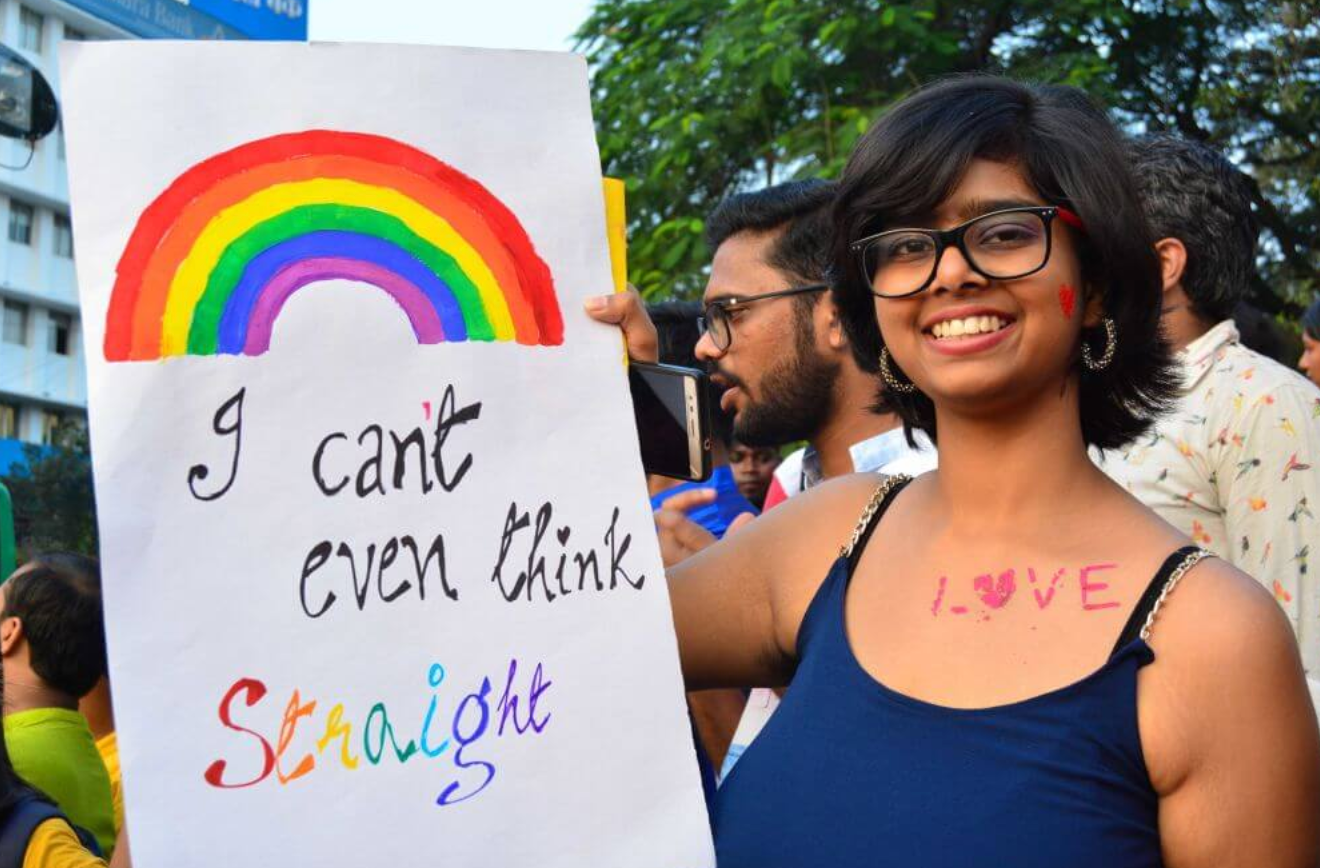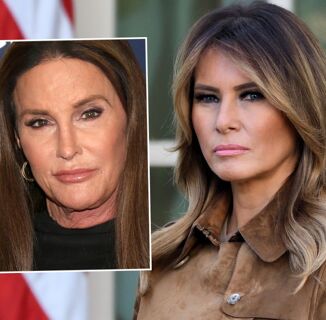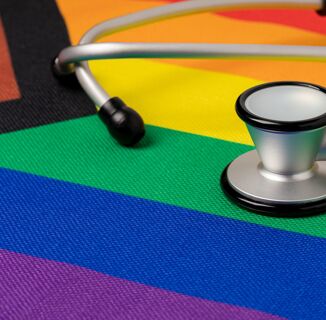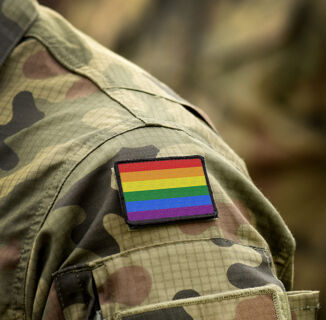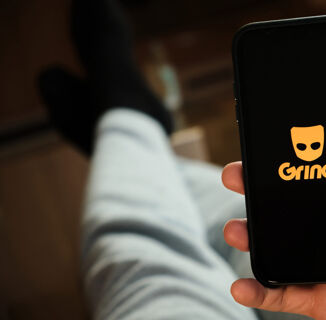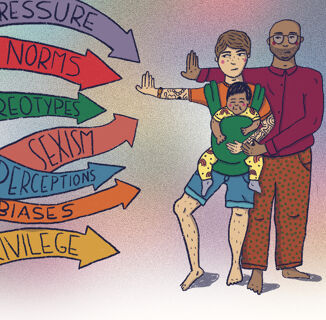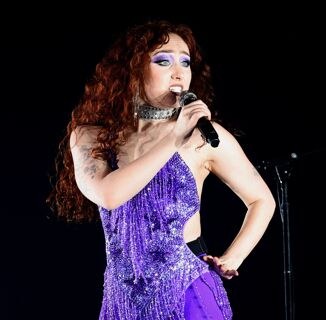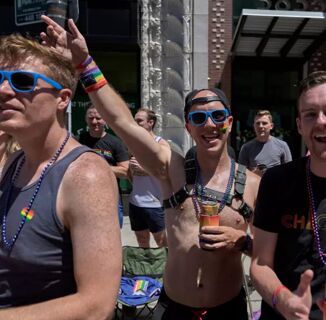In 2018, many South Asians rejoiced as India’s highest court struck down Section 377, a colonial hangover of a law that criminalized homosexuality as punishable with up to 10 years of prison time. Delhi’s high court first pronounced the law unconstitutional in 2009, but this verdict was overridden four years later by the Supreme Court, who took up the matter again this year after receiving complaints. State-sponsored homophobia persists in other parts of South Asia, except for Nepal, where same-sex marriages have been legal since 2007.
Decriminalization, of course, doesn’t mitigate oppression, though many celebrated it as a start. In the wake of this international jubilation, the conversation about queerness and transness continues to evolve. Nation states aside, public attitudes might considered largely intolerant: a 2014 Pew Study found that 85 percent of Pakistanis and 67 percent of Indians thought homosexuality was morally unacceptable. How might we forge paths for future generations, especially as we reconstruct notions of South Asianness in the diaspora?
The implications of the multiple axes of oppressions that South Asian-origin people who identify along the LGBTQ spectrum face has been historically understudied; until recently, there may not have been a critical mass to study in the United States. Today, there are more than 4.3 million South Asians in the fastest-growing ethnicity box (“Asian”). As all study of intersectional oppression goes, academia’s tools may seem limited—or not expedient enough. For many young queer and trans South Asians, finding hope today is a priority—one that is threatened routinely by stigma.
Stigma is doubly invoked: mental health is stigmatized in South Asian culture, leading South Asians to seek counseling less frequently. This stigma is further reified by the fear of social contamination of queerness and transness (a study shows the link between psychological distress and racist events was exacerbated by higher “outness”).
“Stigma against mental health is rampant in many of our communities because we’ve often internalized these assimilationist logics wherein we’re often supposed to be some kind of ‘model minority,’ which becomes especially hard to battle if you don’t come from class privilege,” says V Varun Chaudhry, a PhD candidate at Northwestern University, who says they have consistently turned to black feminism, especially canonical voices like Audre Lorde’s, to make sense of power and self-love.

Queerness in the United States, for non-Black or -Indigenous minorities, is heavily informed by ethnicity and race.
“There’s a dual struggle for queer South Asians to find community. First is at home with family and extended family, and second is within LGBTQ+ spaces which are often white-dominant,” says Dom Chatterjee, founder of QTPoC Mental Health, a grassroots organization to create both online and offline spaces for queer and trans people of color. “There’s little representation for queer South Asian people, which for me meant I felt like I was bad at being queer and bad at being South Asian. QTPoC Mental Health gave me opportunities to meet other queer and gender non-conforming people of color and gain validation around that dual struggle.”
Chaudhry points out the space that desi people occupy in a global racial context. “Especially in ‘colonized’ or ‘western’ contexts, the positioning of ‘desi’ is always in relationship to antiblackness and white supremacy,” says Chaudhry, remarking on the struggle of the South Asian to make sense of where they fit as a racialized ‘other,’ who still has capacity for assimilation and class mobility. “So mental health often looks like unlearning both white supremacy and anti-blackness in order to accept ourselves, our bodies, and our experiences as enough, as whole, and as beautiful.”
More than organizations, people turn to peers, if the recent survey I conducted online and distributed by affinity groups and networks was anything to go by. The survey received 17 responses with participants ranging from 19-33 in age, most under 25. (The survey, which had nearly 200 visits, had an 11 percent completion rate. )
Eight out of 10 respondents said they sought support from friends and mental health providers over family, queer networks, or support groups.
“Mostly it’s been through community and friends, a handpicked chosen family,” says Tiara, a gender non-conforming femme. “I’m pretty used to not being represented anywhere and there’s nothing in the diaspora that really speaks to me on everything, I have to cobble it together from disparate sources. Some of the most supportive people have been the most different (e.g. cis white guys)—you can’t predict this, really.”
Leila, another participant, said that “seeking out older South Asians” has been very important to her in living her queerness in the diaspora. Other participants noted social media personalities like Alok V-Menon and Tanwi Islam in their responses.
Several respondents pointed to media, both social and otherwise, as being restorative—and transformative. “I could never articulate my queerness until college. It just dawned on me about a year and a half ago. Processing was just putting together pieces and realizing how much I refused to allow myself to be queer,” said queer-identified S, who said that Twitter really helped them. “People had been asking me my entire life. It was exhausting.”
AJ, a non-binary brown person, journals, pulls tarot, and prays, in addition to seeing a therapist through their school for diagnosed PTSD., but says they still find their queer identity difficult to navigate. “Gayatri Gopinath and Priyanka Meenakshi’s writing have been really helpful for me to conceptualize my queerness and gender,” says AJ. Gopinath is a professor at New York University whose book Impossible Desires: Queer Diasporas and South Asian Public Cultures is a staple in queer desi scholarship; Meenakshi is a writer-illustrator. “It’s something that grew out of so much sadness and confusion but has evolved into a source of liberation. People like to think that queer people are always happy and fun,” says AJ, for whom, being queer can feel lonely and difficult. “We forget that to be queer is to constantly be in survival mode and in resistance, but finding joy is incredibly important for me.”
Resilience is a word often invoked when speaking of sexual and gender minorities—it is a daily resistance to prejudice and discrimination. In a study of trans youths’ experience of resilience, researchers Anneliese A. Singh, Sarah E. Meng, and Anthony W. Hansen found that the ability to self‐define one’s gender, proactive agency, and access to supportive educational systems, connection to a trans-affirming community, reframing of mental health challenges, and navigation of relationships with family and friends were essential to building resilience. The researchers also identified six threats to resilience: experiences of adultism (the power adults have over children), health care access challenges, emotional and social isolation, employment discrimination, limited access to financial resources, and gender policing. Participants described “a very individualized process of learning to affirm their gender identity outside of prescribed (or routine) navigation of identity formation,” and the researchers recommended mental health practitioners “develop trans-affirming environments for their clients.”
Kripa, a 20-year-old cis lesbian, has found therapy, transparency, and mindfulness helpful in managing her depression. “I’ve been in therapy sessions where even though I knew my therapist wasn’t homophobic, I don’t know how much they understood that identifying as a lesbian affects my life?” she tells INTO. “I think a lot of them saw it as just another aspect of my identity as opposed to the identity that’s had the most social and personal costs to me?”
Vikasini, a young bisexual woman, worries that seeking medication would impact her employment. “My PCP prescribed me medication for depression but I was too nervous that a diagnosis would affect my work,” she says. “I am in medical school and my ‘superiors’ can see my medical record.”
A 2009 study of 94 LGBT-identifying South Asians in Southern California found that even if they had access to health services, cultural norms and the related threat of community alienation highly impacted the likelihood South Asians would seek help. “Many [LGBTQ] South Asians feel so alienated and isolated from the broader South Asian community, the broader [LGBTQ] community, and U.S. society in general, that any intervention targeting this population should address changing cultural norms in order to be effective and responsive,” wrote the researchers. Seventy-nine percent of respondents had access to mental health care, but only 30 percent availed of it.
South Asian queerness may be a particular one influenced by its own postcoloniality, with multiple respondents bringing up colonial pasts as a present-day issue. The criminalization of homosexuality in South Asia is, after all, a colonial relic.
To Shivani, being queer in the diaspora means “a return to pre-colonial lifestyle—not to romanticize Hindu-Brahmin dominated society—a return to my relationship with Hinduism and Indian culture before white people commodified it and made it feel inaccessible and exotic.”
The diaspora itself poses its own degree of friction, where many South Asians have raised families in more archetypically individualistic societies, where honor and fear of social contamination may be limited to friend circles rather than a looming, amorphous samaj.
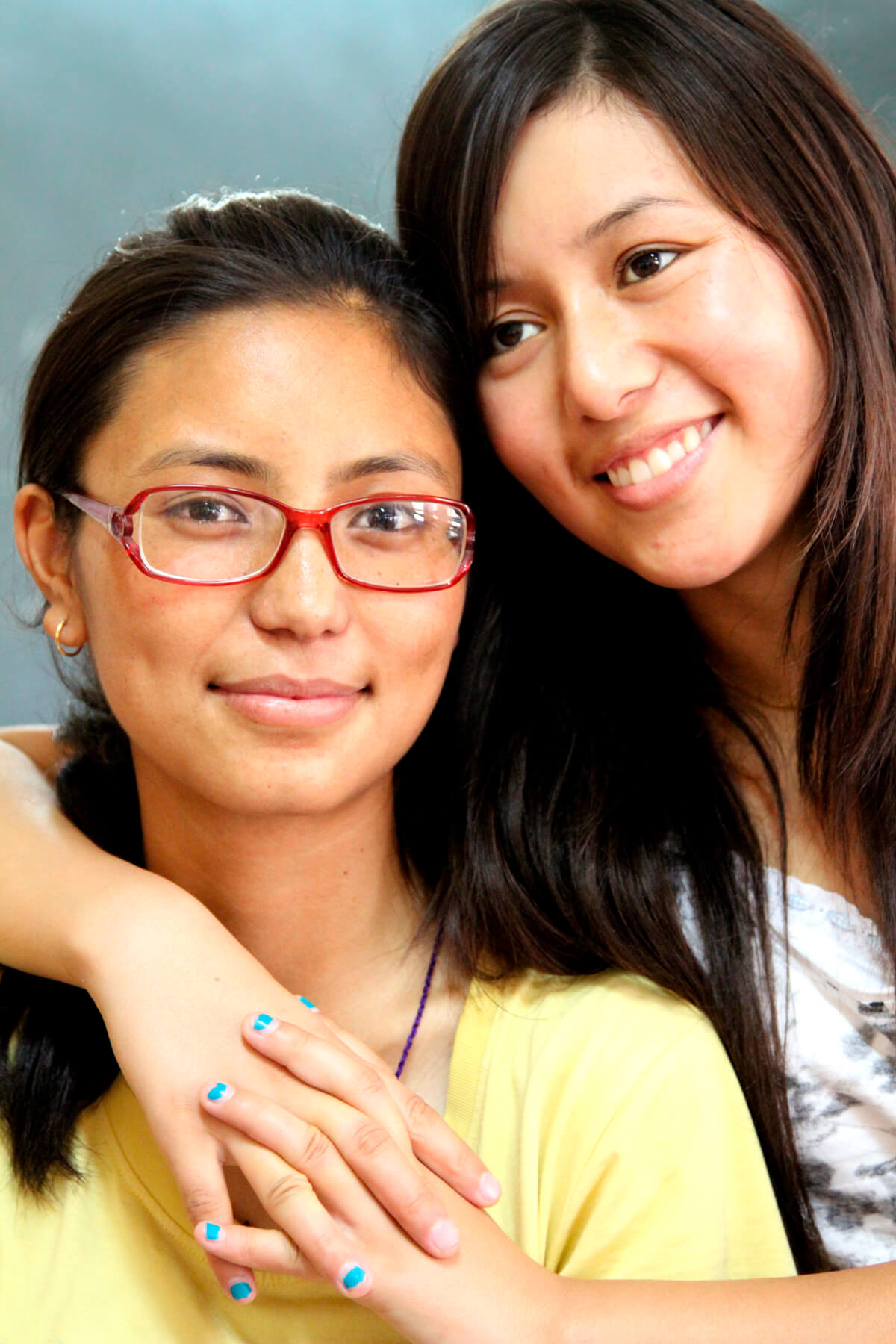
Rashmi, a queer teenager, says that her queerness is a sort of reclamation. “It’s reclaiming an identity which is constantly erased and invalidated, and it’s a creation of a new existence which contains both American and South Asian influences of ethnicity and sexuality,” she tells INTO.
Colonial narratives have stripped South Asian culture of its queerness and inculcated homophobia, some contend, while others stress that the oppressions these societies also enact cannot be ignored. Within the umbrella term “South Asian”—a term used to build socio-political solidarity in the diaspora, when in the subcontinent inter-nation conflict abounds—there exists layered oppressions, especially caste-, class-, and religion-based, and being away from the homeland hasn’t solved it. According to a 2017 Equality Labs report, one in four Dalits reported experiencing physical violence because of their caste—and four in 10 reported being rejected romantically because of it.
A study of Black and South Asian gay men in Britain found that for South Asian men, a “major theme was regret at being unable to fulfill family expectations regarding marriage and children.” This family-specific anxiety is one that may be common across the board for those identifying as queer and trans in the South Asian diaspora.
“Sometimes, the behavior of one family member in South Asian communities might be considered representative of the family as a whole to the rest of society. This can cause individuals to have higher levels of guilt for even having thoughts related to being LGBTQ,” says Dr. Neeral Sheth, Assistant Professor of Psychiatry at Rush University Medical Center in Chicago, IL. “Some individuals may feel that having someone with am LGBTQ identity in the family could even impact the marriage prospects of siblings, if the family is going down the route of an arranged or semi-arranged marriage.” When the prospect of even an inter-racial or -religious relationship may threaten the family’s concept of honor, queerness and transness pose an even larger issue.
In Dr. Sheth’s experience, South Asians, especially when parents are 1st generation immigrants, “tend to place an importance on respect and obedience to parental figures.” Some may fight their LGBTQ identities because they do not want to disrespect their parents, says Dr. Sheth.
“This ‘disrespect’ can not only change family dynamics, but also impact the financial stability of younger South Asians still dependent on their parents,” Dr. Sheth says. Researchers have studied younger South Asians’ resistance to cultural deviancy, especially in dating and sexuality, finding answers in a social bond theory, though this study did not explicitly cover queer and trans dating.
“Acculturation and enculturation are both processes of change an individual undergoes when they move to a new culture; this can cause tension within the family as well. Something I hear frequently is parents initially blaming ‘American culture’ for their child identifying as LGBTQ,” says Dr. Sheth, who adds that family members of queer and trans individuals may place blame on themselves and experience negative psychological symptoms because of it.
Youth from more conservative and anti-queer cultures may resort to more existential thinking such as “Why did God make me gay?” finds Dr. Sheth.
“This obviously has a huge impact on the child/adolescent’s identity formation. LGBTQ adolescents might delay life experiences/social development in order to feign being cisgender or heterosexual,” he says. “They might have their ‘firsts’ at a later age and might be behind their peers in terms of these important life events.” Young Asian Americans tend to exhibit more sexually conservative attitudes and behavior, research finds.

Dr. Sheth points to stigma as being a major issue in this population, noting that in anticipating future prejudice or discrimination, individuals may have higher levels of baseline stress.
“There is not only the stigma of being brown and the stigma of being queer, but unfortunately a lot of people may feel stigmatized for accessing mental health care as well,” he says. “Many feel uncomfortable with the vulnerability of asking for mental health support. Although there are great efforts being made to reduce this stigma in the general population, I think South Asian communities often still consider mental health issues a weakness or moral failing.”
Queer and trans South Asians find themselves minoritized multiple times over. Racism and xenophobia are not limited to the mainstream, with the LGBTQ community also demonstrating similar forms of exclusion. Of course, as Dr. Sheth points out, people within the South Asian community may internalize racism, homophobia, and transphobia to cope with their own sets of isolation.
“This can be very isolating as it can sometimes be difficult for individuals to find an ‘ingroup,’” he says.
Dom Chatterjee, editor of Rest For Resistance, notes that community support is essential to identity production, a process that can be harmed by isolation and ostracization. “And more specifically, meeting other queer South Asians—who are all uniquely beautiful in how they embody their identities—helped me see that I’m not bad at being queer or South Asian, but that our identities and potential have been masked and can be uncovered and honored through collective effort,” Chatterjee says.
Indeed, there is a strong legacy in the United States of organizations and support networks built to foster these connections. The National Queer Asian Pacific Islander Alliance holds a conference around every other year since 2009. The South Asian Lesbian and Gay Association of New York City (SALGA-NYC) has been serving NYC as an all-volunteer organization for 25 years. Trikone, founded in 1986 in San Francisco, is the oldest organization of its kind. Satrang serves southern California, while KhushDC serves the Washington, DC area. Queer South Asian National Network (QSANN) is a cross-regional organization, and there’s a helpline specifically for LGBTQ-identifying desis. Other organizations who aim to ameliorate the stressors of mental health in the desi community also existing, including South Asian Mental Health Initiative & Network (SAMHIN), Mann Mukti, Mai Family Services, and South Asian Mental Health Awareness in Jersey (SAMHAJ).
In a YEAR study, Family Acceptance Project found that LGBTQ youth who are rejected by their families are at much higher risk for suicide, substance abuse and depression: in short, family acceptance or rejection is crucial to understanding minority stress. PFLAG-NYC — Parents, Families and Friends of Lesbian, Gay, Bisexual and Transgender People — was founded in New York, and includes the support group API Rainbow Parents.
Participants in the survey described their family’s understanding of LGBTQ matters in a variety of ways: “problematic,” “tolerant, but not accepting,” “supportive, sometimes apathetic,” “it’s fine if nobody knows,” “accepting in the form of erasure, minimizing, and neglect,” and “only one gay cousin per family, right?” Kripa recalls how their family found out about their queerness through Twitter.
“This was followed by an awful couple of days of them questioning and berating me,” they said. “We haven’t talked about it since. I think someday we will have to be transparent about who I am and the harm that has transpired, but I don’t know when that will be.”
Dr. Sheth also points out that some in the South Asian community think of queerness and transness themselves as representations of mental illness. “This belief can cause queer people to avoid accessing care because they feel they are perpetrating this belief by acknowledging they need mental health support,” he says. “There is evidence that LGBTQ people do have higher rates of depression, anxiety, substance use, suicidality, and other mental health concerns—this is due to the effects of stigma, though, and not something that is inherently part of being LGBTQ. It is well theorized by the minority stress theory (Meyers, 2003).”
The dissimilarity of queerness to the model minority archetype possibly contributes to the fear of social contamination the South Asian community might have towards people who are LGBTQ.
“Deviancy from the prescribed norms of what it means to be a successful person in South Asian communities tend to be fodder to such treatment,” says Hima Sathian, who works with minoritized populations in New Jersey, of the conflation of queerness with mental health issues. “There’s a lot of fear there, of being unable to imagine what a life that does not include following one’s assigned gender script, marrying another of the ‘opposite’ gender, and then having biological children could entail. There are other factors that drive these mechanisms too like patriarchy and casteism…essentially, about how maintaining these power structures are a bigger priority than it is preserving people’s well-being, love, and joy.”
Hima, who is in a relationship with another queer South Asian, says they “try our best to face the reality of our histories, our family’s histories, but do so with as much compassion to ourselves and our families as we can.”
The burden of speaking up is also disproportionate. As Erving Goffman notes in his 1963 work Stigma: Notes On The Management Of A Spoiled Identity, “the more there is about the individual that deviates in an undesirable direction from what might have been expected to be true of [them], the more [they are] obliged to volunteer information about [themselves], even though the cost to [them] of candor may have increased proportionally.”
Vikasini recently came out to her parents. She believes they consider her homosexuality a “phase” and a reaction to early childhood sexual trauma she had. But to Vikasini, her queerness in the diaspora “means layers of hidden desire and longing which can’t permeate and become a part of my visible identity because my roles as a daughter, future doctor, and Indian community member outweigh my right to outwardly bear my inner truth as a queer woman.”
Images via Getty
This article was made possible by a grant from the American Society of Journalists and Authors
Help make sure LGBTQ+ stories are being told...
We can't rely on mainstream media to tell our stories. That's why we don't lock our articles behind a paywall. Will you support our mission with a contribution today?
Cancel anytime · Proudly LGBTQ+ owned and operated
Read More in Impact
The Latest on INTO
Subscribe to get a twice-weekly dose of queer news, updates, and insights from the INTO team.
in Your Inbox

